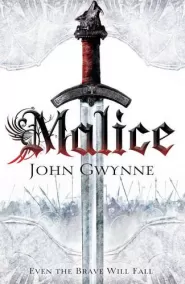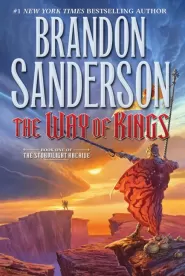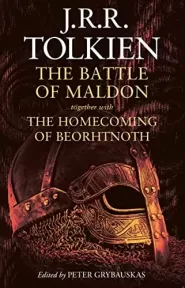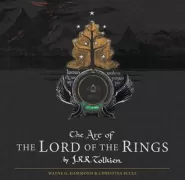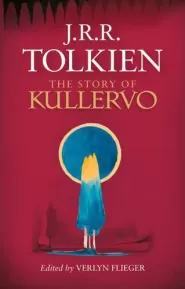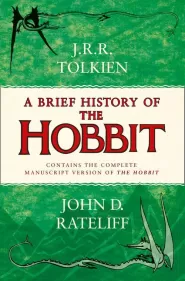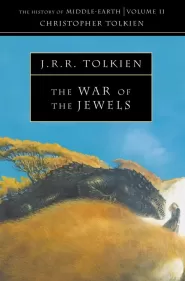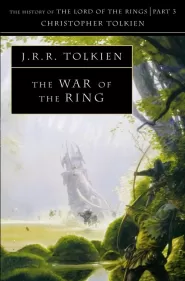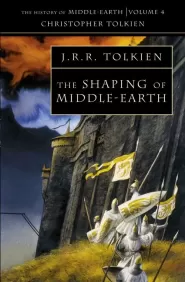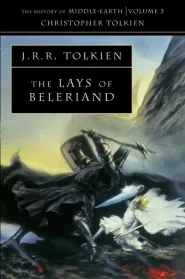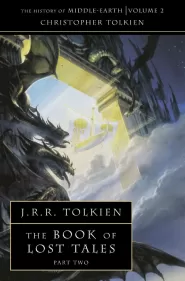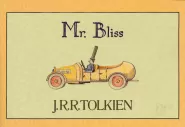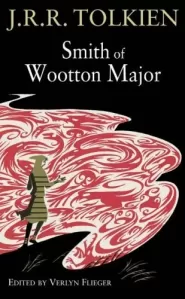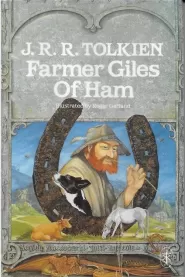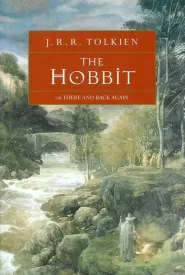The Silmarillion
Locus Award for Best Fantasy Novel 1978.
The tales of The Silmarillion were the underlying inspiration and source of J. R. R. Tolkien's imaginative writing; he worked on the book
throughout his life but never brought it to a final form. Long preceding in its origins The Lord of the Rings, it is the story of the First Age
of Tolkien's world, the ancient drama to which characters in The Lord of the Rings look back and in which some of them, such as Elrond and
Galadriel, took part.
The title Silmarillion is shortened from
Quenta Silmarillion, "The History of the Silmarils," the three great
jewels created by Fëanor, most gifted of the Elves, in which he
imprisoned the light of the Two Trees that illumined Valinor, the land
of the gods. When Morgoth, the first Dark Lord, destroyed the Trees,
that light lived on only in the Silmarils; Morgoth seized them and set
them in his crown, guarded in the impenetrable fortress of Angband in
the north of Middle-earth. The Silmarillion is the history of the
rebellion of Fëanor and his people against the gods, their exile in
Middle-earth, and their war, hopeless despite all the heroisim of Elves
and Men, against the great Enemy.
The book includes several
other, shorter works beside The Silmarillion proper. Preceding it are
"Ainulindalë," the myth of Creation, and "Valaquenta," in which the
nature and powers of each of the gods is set forth. After The
Silmarillion is "Akallabêth," the story of the downfall of the great
island kingdom of Númenor at the end of the Second Age; completing the
volume is "Of the Rings of Power and the Third Age," in which the events of The Lord of the Rings are treated in the manner of The Silmarillion.
”Demanding to be compared with English mythologies... at times rises to the greatness of true myth.” – Financial Times
”A creation myth of singular beauty... magnifient.” – Washington Post
Readers also enjoyed
J. R. R. Tolkien
J. R. R. Tolkien, the creator of Middle-earth, was not just a writer; he was a weaver of worlds, a philologist whose deep understanding of language and mythology breathed life into epic landscapes, timeless characters, and legends that still captivate readers around the world. Born in 1892 in Bloemfontein, South Africa, Tolkien’s early years were marked by tragedy—his father’s untimely death and the loss of his mother, both of which shaped the tone of his writing. His roots in the English countryside, where he moved as a child, became the fertile ground for the stories that would define an entire genre.
More books by J. R. R. Tolkien
Book Reviews
The Silmarillion is a classic fantasy book. It's the "Bible of Middle-earth". This book tells how Middle-earth was created and what happened during the ancient times. One of the most beautiful and tragic stories in The Silmarillion is the love story of Beren and Luthien, a man and an elf maiden. It's an unforgettable story about love and sacrifice. I love this book and I've read it many times. If I could give 10 stars, I would do so, because this book is simply great. :) It's much better than The Lord of the Rings.




